A new health record. It comes into force on January 1, is aimed at children due in 2025 and introduces new advice to parents. In this revised version and accessible online, For each age, parents are offered reference points to situate the child in their development (social, cognitive, motor) with adapted prevention messages that reflect scientific and social advances.
QR codes are also present on the pages, allowing more precise information about certain points, telephone numbers or even access to a chat, especially for teenagers.
This new notebook is made up of four main parts. First the “perinatal period” with elements on family history and the course of pregnancy. Then comes the “Tips for parents and teenagers” section, which contains information on how to eat, cry, bathe, but also on how to limit indoor pollution and even messages reserved for teenagers.
The third part “Medical surveillance” includes the pages reserved for examinations from birth to adolescence, pointing out the different stages of the child’s development. Finally, the last part is intended for health professionals with pages dedicated to allergies, oral monitoring, long-term pathologies and hospitalizations, a kind of health passport that follows the child.
• Apgar score
Among the new features of the clinical history, the mention of the Apgar score at 1, 5 and 10 minutes stands out. It allows evaluating the main vital functions of the newborn immediately after birth. The Apgar score, developed by American anesthesiologist Virginia Apgar, is based on five criteria: heart rate, respiratory rate, muscle tone, reactivity and coloration of the newborn. If the parent rejects this evaluation, this will now be indicated.
• Neurodevelopmental disorders
Another important point: information on symptoms that indicate possible vision or hearing problems and reference points to facilitate the diagnosis of neurodevelopmental disorders that affect one in six children.
“Neurodevelopmental disorders are specific disorders that appear early in childhood,” Health Insurance specifies.
There are many: autism, dyspraxia, dysgraphia, ADHD or even dyslexia and they are much better served if they are detected in time, as recalled by the Interministerial Delegation for the National Strategy on Autism within neurodevelopmental disorders.
• The 20 mandatory health exams
One of the great novelties of this health book are also the 20 mandatory health exams, all detailed. Obviously, in addition to the exams at birth and in the following eight days, they are carried out during the second week, at one month, at 2 months, at 3 months, at 4 months, at 5 months, at 8 months, at 11 months, at 12 months, between 16 and 18 months, between 23 and 24 months, at 2 years, at 3 years, at 4 years, at 5 years, at 6 years old, between 8 and 9 years old, between 11 and 13 years old and finally between 15 and 16 years old.
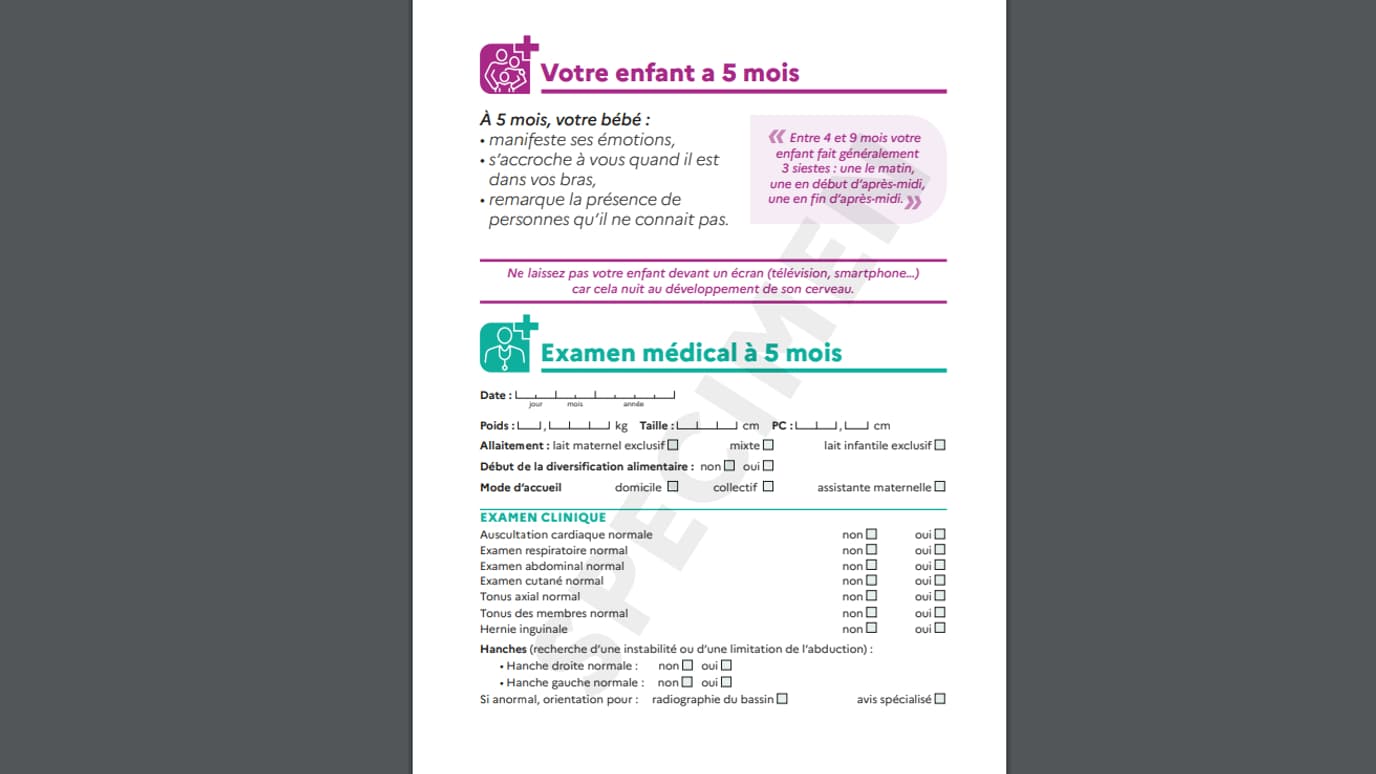
In terms of medical surveillance, a new examination is made mandatory at age 6 to “reinforce prevention at the time when most children enter primary school, particularly in terms of sensory detection and developmental disorders,” it specifies. the General Directorate of Health. .
An exam that will also be an opportunity to perform the booster vaccination against whooping cough, diphtheria, tetanus and polio, recommended at age 6.
• Violence prevention
In the “Advice for parents and adolescents” section, two pages are dedicated to tips for raising your child without violence. The notebook thus recalls the law of July 10, 2019, which establishes that parental authority is exercised without physical or psychological violence.
“Violence influences child development and can be responsible for numerous disorders,” it is written.
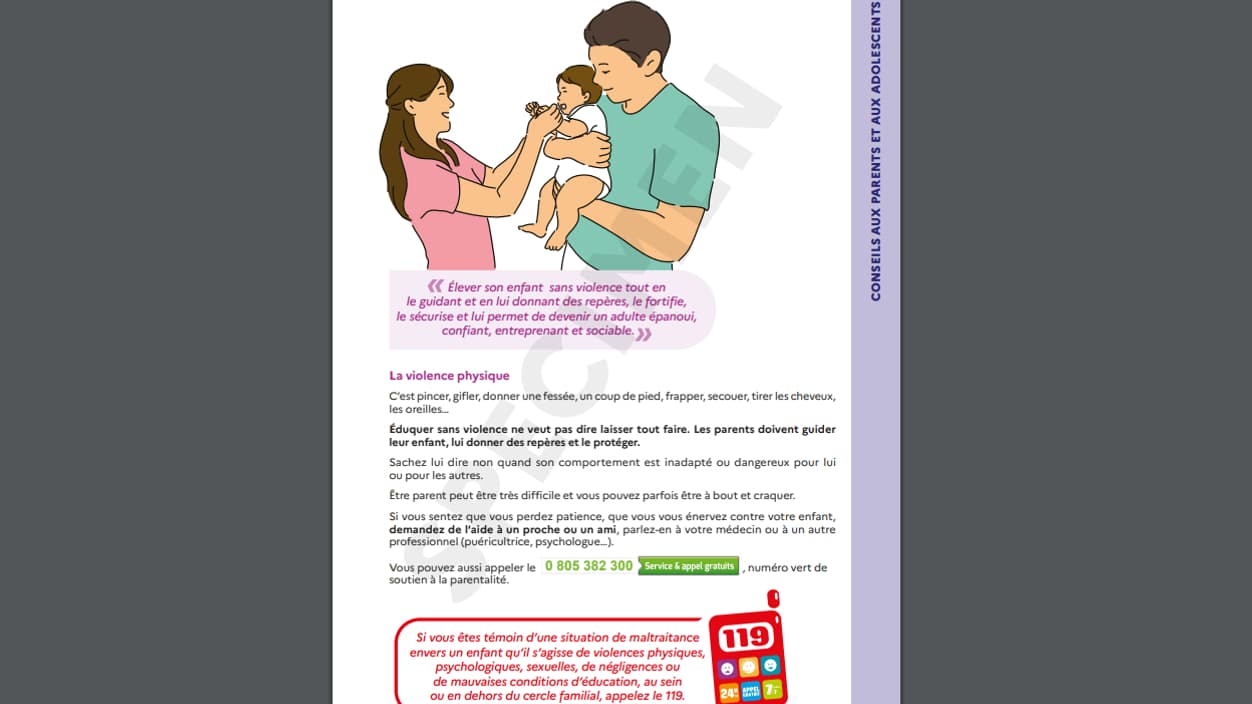
The notebook specifies that psychological violence “is shouting, insulting, belittling, frightening, threatening, making your child feel guilty.” “It also means not meeting his basic needs for affection, care, protection or exposing him to family disputes.” As for physical violence, “they are pinching, slapping, spanking, kicking, hitting, shaking, pulling hair, pulling ears.” Help and emergency numbers are also indicated.
• Pages dedicated to screens
The new health sheet includes pages dedicated to screens to take into account “the new recommendations of the Higher Council of Public Health,” the Medical Insurance specifies on its site.
The new laptop thus reminds that children under 3 years old should not have access to screens. “Don’t leave your child in front of a screen, it harms their brain development.”
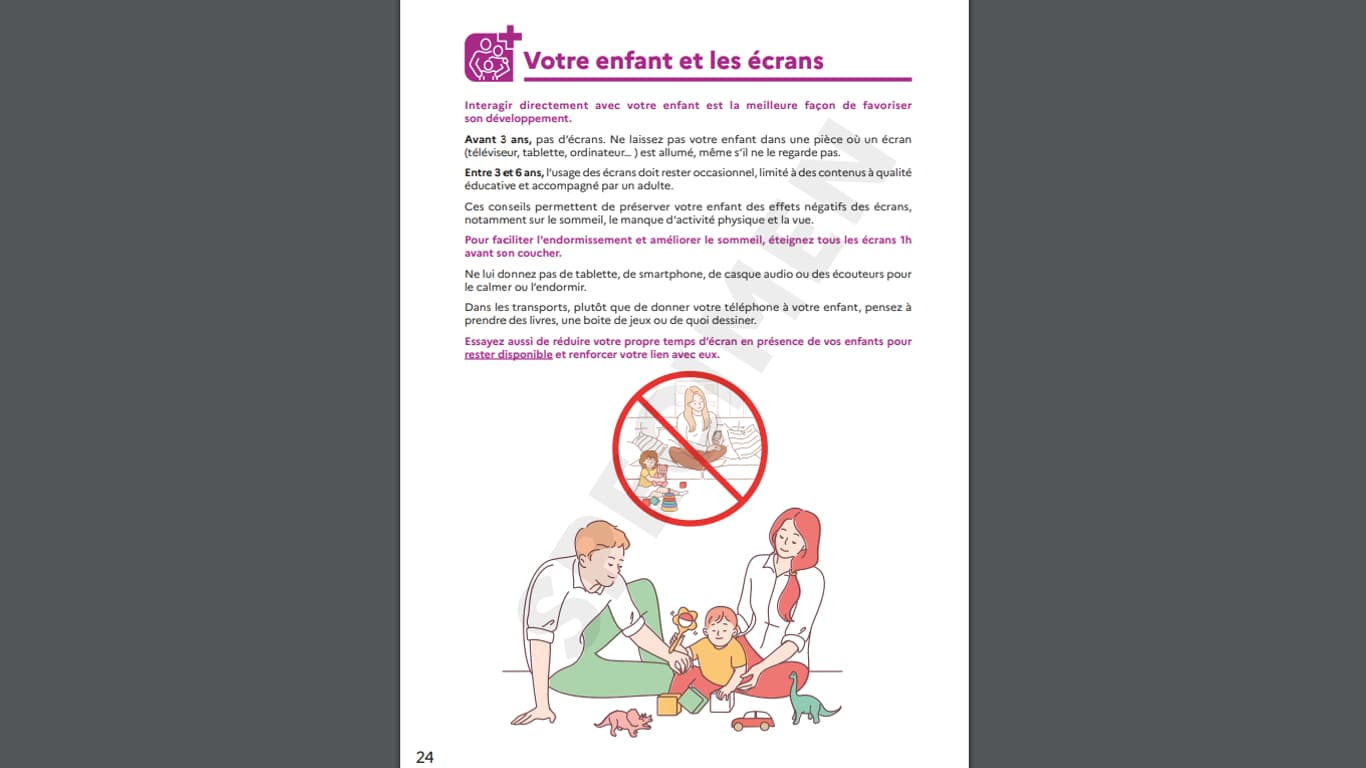
Between 3 and 6 years, screen use should be occasional, remember the medical history, which also establishes medical follow-up in this regard. Among the practical tips: “when transporting, instead of giving your child your phone, consider bringing books, a game box or something to draw on.”
• The practice of sport
The practice of sport is strongly encouraged in the new health card. Thus, recommendations are made for each age. Example: “from the age of 6, your child practices at least one hour of physical activity a day.”
In each health examination, the practice of physical activity, the quality of sleep or the use of screens is questioned.
• Pages reserved for teenagers
Several pages are dedicated to adolescence and provide emergency numbers in case of bullying, dark thoughts or danger. The sections are also intended for teens: “have your child read the next section.”
From the age of 15, the brochure reminds us that a first gynecological consultation and information about sexuality can be useful, especially for girls and the treatment of endometriosis.
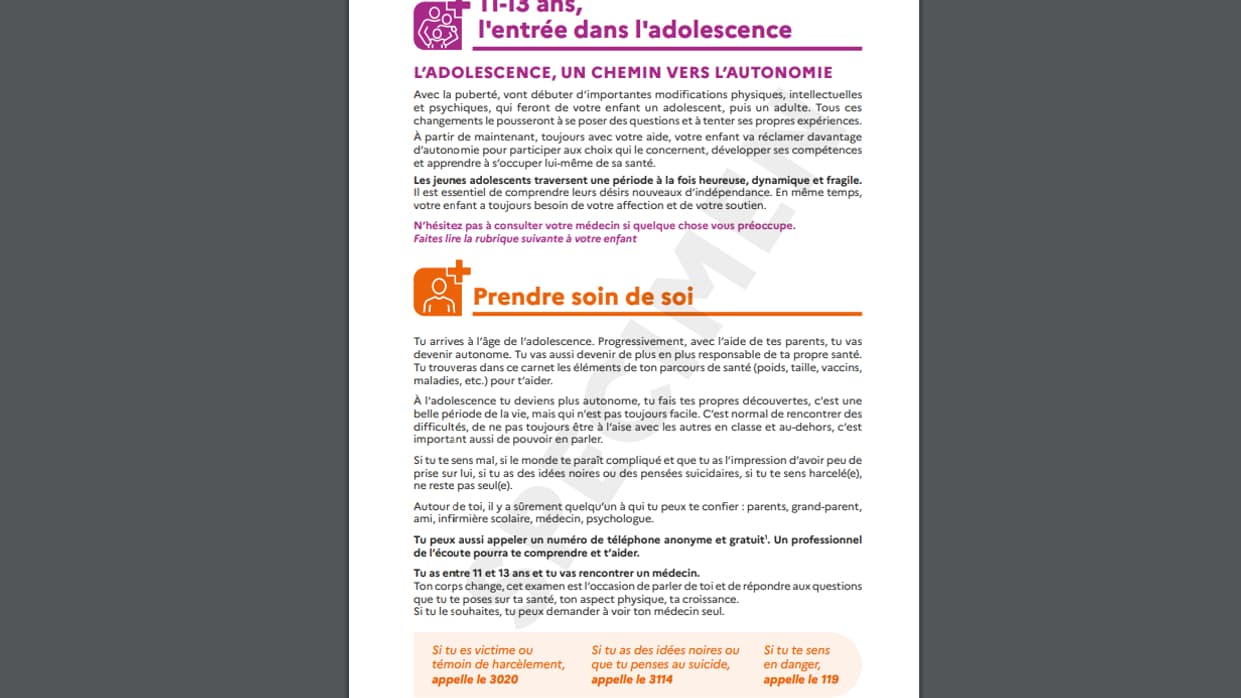
Prevention messages are also distilled, particularly on the use of psychoactive substances, road safety and sexual health. A paragraph is thus dedicated to the notion of consent and the importance of protecting oneself during sexual relations to avoid any sexually transmitted infection is recalled.
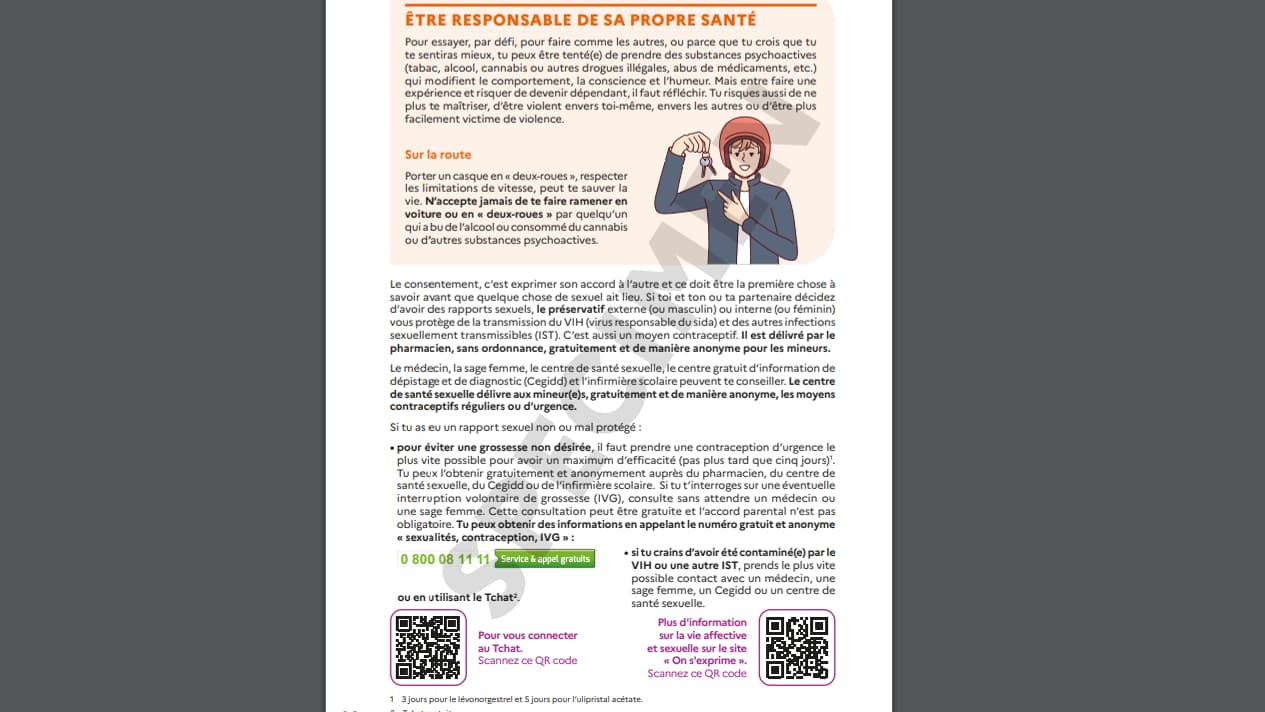
The booklet also indicates preferred contacts: doctor, midwife, sexual health center or school nurse. And call the toll-free number to resolve questions about contraception, sexuality or voluntary termination of pregnancy. A chat can also be accessed using a QR code.
Source: BFM TV


